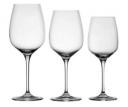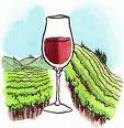I went away (within Israel) for the sabbath to a friend of the family. A wonderful woman and great cook it is always a nice shabbat when spent with her and her family. But it doesn’t hurt that she lives next door to a fabulous winemaker, who is also a brilliant & warm man and whom I am fortunate to call a good friend. After attending early services (started at 6:20AM – YIKES) we had a “kiddush” in the sukkah of the winemaker friend. For those of you familiar with the word kiddush when referring to the blessing over wine, I’m using the word here to refer to “a ceremonial meal served … following the recitation of kiddush at the conclusion of services, in which refreshments are served. Traditionally, this often includes cake, crackers, and fish.” BUT, this was no ordinary kiddush…and not just because we started drinking at 9AM…
 This was a wine tasting kiddush, and the winemaker friend and his amazingly hospitable wife prepared all kinds of salads (made from home grown tomatoes, lettuce, eggplant and herbs), quiches, cheeses, cakes, etc to go along with the truly FABULOUS wines we were about to taste. There were 7 of us around the table and we were in for quite a treat. Since it was Sabbath I did not take tasting notes, but it is a day and wines I will not soon forget.
This was a wine tasting kiddush, and the winemaker friend and his amazingly hospitable wife prepared all kinds of salads (made from home grown tomatoes, lettuce, eggplant and herbs), quiches, cheeses, cakes, etc to go along with the truly FABULOUS wines we were about to taste. There were 7 of us around the table and we were in for quite a treat. Since it was Sabbath I did not take tasting notes, but it is a day and wines I will not soon forget.
The first wine we opened was a 2006 Chateau Lafont Menaut Pessac-Leognan Bordeaux Blanc. Crisp, minerally, refreshing…great start!
Normally we might save special wines for the end, but we were about to open some elegant aged Bordeaux. And while they were the “stars” of the night, they are also wines that are not nearly as robust as they were in their youth, leaving them susceptible to being overpowered by younger, more tannic (and robust) wines – which is why we tasted them first.
So following the Bordeaux Blanc we opened a 1998 Chateau Monbousquet St. Emillion Grand Cru. WOW. At 10 years old, this Bordeaux tasted young! Excellent fruit and plenty of tannins. Some plums, great earthiness and a hint of mocha.
Up next was a legend. Maybe not from a legendary vintage, but…a Chateau Latour. The 1981…yes, I said 1981 Pauillac Grand Vin de Chateau Latour – what a treat! We were concerned that the wine might not be alive and drinkable, but fortunately we underestimated the staying power of good Bordeaux. Very much alive, this wine started off tight, showing nice prune & leather characteristics, eventually opening up to show fruit – all packaged nicely, silky soft and round. Its tannins and acid had dropped out over time, and this wine was quite soft. Maybe not everyone’s preferred style, but undoubtedly a special wine.
Our third red of the morning was a negociant wine. The 1996 Tardieu – Laurent Hermitage made mostly (or entirely?) of Syrah was very interesting. A 12 year old wine, I found it to be high in acidity. The acid will usually drop in a wine as it ages, so this surprised me. But I was told that 12 years is not old for Hermitage, and that it would soften with further aging. It did have a nice minerality and some subtle mocha aromas. A wine (Hermitage) I will definitely be re-visiting…
At this point it was getting a bit late (11AM and apparently people had lives to get to – you believe that?!) and with 3 wines left we opened up the 2 baby reds of the bunch. A 2003 Artadi Pagos Viejos Rioja and the 2001 Grant Burge “Meshach” Shiraz. These were fruit forward style wines. I don’t remember much about the Rioja aside from its up front fuit and nice earthiness. While the Meshach Shiraz was HUGE. It actually reminded me a bit of a California Zinfandel. It had BIG fruit and an almost sweet taste. But this was not a one-dimensional wine. It showed pencil shaving & cigar box aromas. Was well structured (especially for such a big wine) and went quite well with the cakes which by this time had been served.
A final treat was a dessert wine from Alsace. The Domaine Bott-Geyl Sonnenglanz Grand Cru Alsace dessert wine, made of Pinot Gris (and apparently given a 98 by Robert Parker) was a deliciously sweet treat. Its acid was present, which prevented any cloying sweetness, but it was so well integrated it was almost as if it wasn’t there. Very tasty and a special wine to finish things off with.
Assuming I haven’t lost you yet, there was another tasting. This one at a more normal hour (7PM). After the Sabbath I drove into Tel Aviv to meet up with a friend who I may work with on my Israel Wine Project. He has a beautiful apartment in a hopping part of the city and he had about 8 people over for some Israeli wines. I brought some bottles of local Israeli boutique wine and we had a lovely time. I talked a bit about each of the wineries, told them about the wine makers, and we then tasted the wines together. A lite Carignan based wine was casually enjoyed. A Sangiovese/Syrah/Cab Franc blend was intriguing and determined to be a great food wine. While the king, a Cab based wine (with 10% Merlot) was thoroughly enjoyed and drunk to the last drop.
Happy TWICE A DAY Wine Tasting!
WTG













